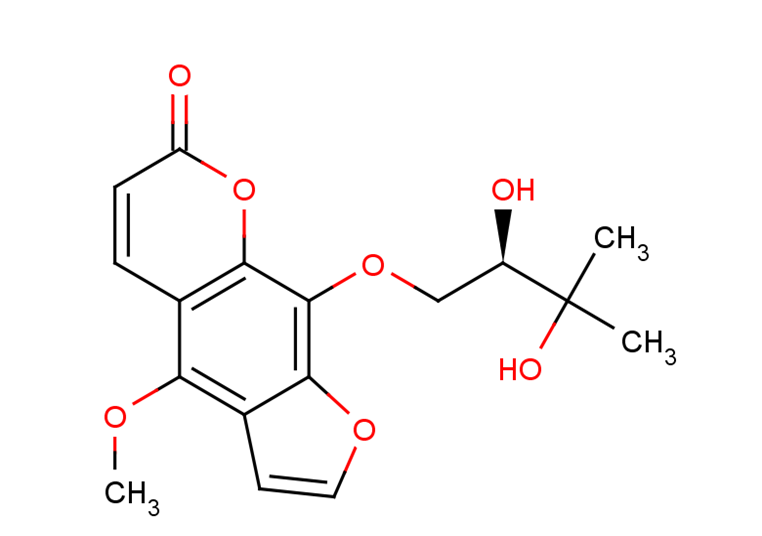BYAKANGELICIN
| Code | Size | Price |
|---|
| TAR-T5813-1mg | 1mg | £106.00 | |||||||||||||||||||||||||||||||||||||||||||||||||||||||||||||||||||||||||||||||||||||||||||||||||
| Special offer! Add £1 to your order to get a TargetMol CCK-8 Kit. Read more here. | |||||||||||||||||||||||||||||||||||||||||||||||||||||||||||||||||||||||||||||||||||||||||||||||||||
Quantity:
| TAR-T5813-5mg | 5mg | £148.00 | |||||||||||||||||||||||||||||||||||||||||||||||||||||||||||||||||||||||||||||||||||||||||||||||||
| Special offer! Add £1 to your order to get a TargetMol CCK-8 Kit. Read more here. | |||||||||||||||||||||||||||||||||||||||||||||||||||||||||||||||||||||||||||||||||||||||||||||||||||
Quantity:
| TAR-T5813-1mL | 1 mL * 10 mM (in DMSO) | £163.00 | |||||||||||||||||||||||||||||||||||||||||||||||||||||||||||||||||||||||||||||||||||||||||||||||||
| Special offer! Add £1 to your order to get a TargetMol CCK-8 Kit. Read more here. | |||||||||||||||||||||||||||||||||||||||||||||||||||||||||||||||||||||||||||||||||||||||||||||||||||
Quantity:
| TAR-T5813-10mg | 10mg | £203.00 | |||||||||||||||||||||||||||||||||||||||||||||||||||||||||||||||||||||||||||||||||||||||||||||||||
| Special offer! Add £1 to your order to get a TargetMol CCK-8 Kit. Read more here. | |||||||||||||||||||||||||||||||||||||||||||||||||||||||||||||||||||||||||||||||||||||||||||||||||||
Quantity:
| TAR-T5813-25mg | 25mg | £309.00 | |||||||||||||||||||||||||||||||||||||||||||||||||||||||||||||||||||||||||||||||||||||||||||||||||
| Special offer! Add £1 to your order to get a TargetMol CCK-8 Kit. Read more here. | |||||||||||||||||||||||||||||||||||||||||||||||||||||||||||||||||||||||||||||||||||||||||||||||||||
Quantity:
| TAR-T5813-50mg | 50mg | £455.00 | |||||||||||||||||||||||||||||||||||||||||||||||||||||||||||||||||||||||||||||||||||||||||||||||||
| Special offer! Add £1 to your order to get a TargetMol CCK-8 Kit. Read more here. | |||||||||||||||||||||||||||||||||||||||||||||||||||||||||||||||||||||||||||||||||||||||||||||||||||
Quantity:
| TAR-T5813-100mg | 100mg | £623.00 | |||||||||||||||||||||||||||||||||||||||||||||||||||||||||||||||||||||||||||||||||||||||||||||||||
| Special offer! Add £1 to your order to get a TargetMol CCK-8 Kit. Read more here. | |||||||||||||||||||||||||||||||||||||||||||||||||||||||||||||||||||||||||||||||||||||||||||||||||||
Quantity:
Prices exclude any Taxes / VAT
Overview
Regulatory Status: RUO
Shipping:
cool pack
Storage:
-20℃
Images
Documents
Further Information
Bioactivity:
BYAKANGELICIN,a main furanocoumarin constituent isolated and characterized as an aldose reductase inhibitor,and is effective for the treatment of sugar cataracts and diabetic neuropathy and hence might be useful as a lead compound for the development of new type drugs for clinical use.
CAS:
482-25-7
Formula:
C17H18O7
Molecular Weight:
334.32
Pathway:
Metabolism; Endocrinology/Hormones
Purity:
0.9986
SMILES:
COc1c2ccoc2c(OC[C@@H](O)C(C)(C)O)c2oc(=O)ccc12
Target:
Reductase
References
Shin K H , Lim S S , Kim D K . Effect of byakangelicin, an aldose reductase inhibitor, on galactosemic cataracts, the polyol contents and Na(+), K(+)ATPase activity in sciatic nerves of strepto-zotocin-induced diabetic rats.[J]. Phytomedicine International Journal of Phytotherapy & Phytopharmacology, 1998, 5(2):121.
Yang J , Luan X , Gui H , et al. Byakangelicin induces cytochrome P450 3A4 expression via transactivation of pregnane X receptors in human hepatocytes[J]. British Journal of Pharmacology, 2010, 162(2):441-451.



